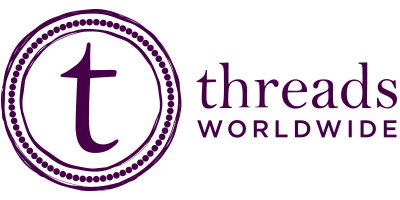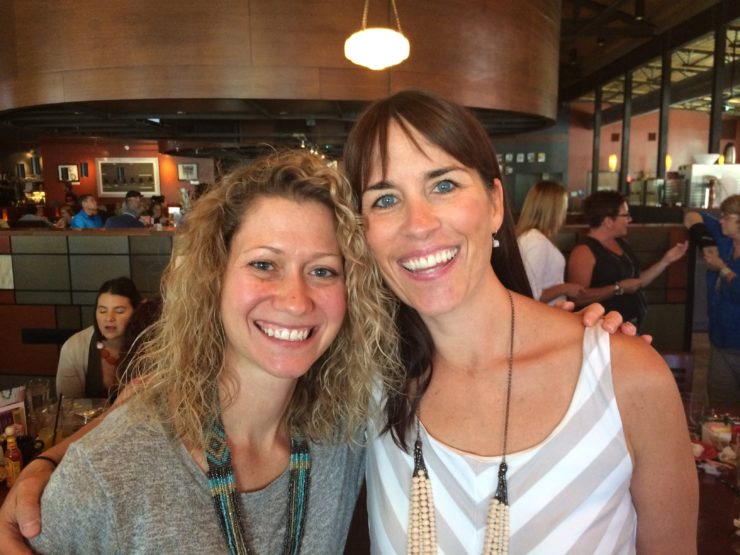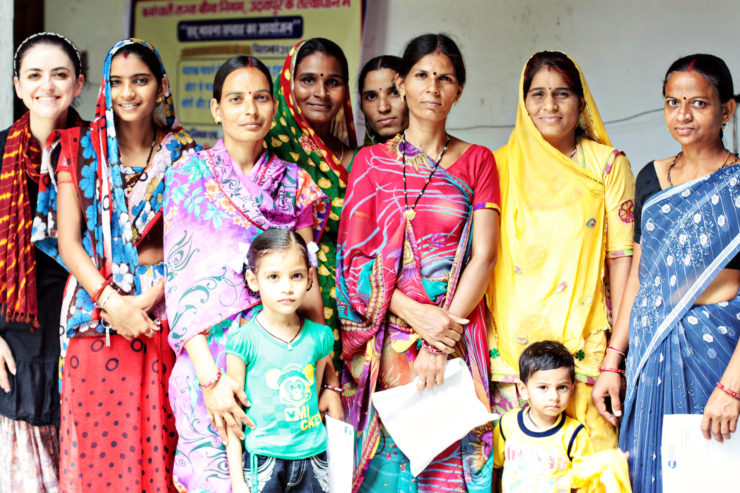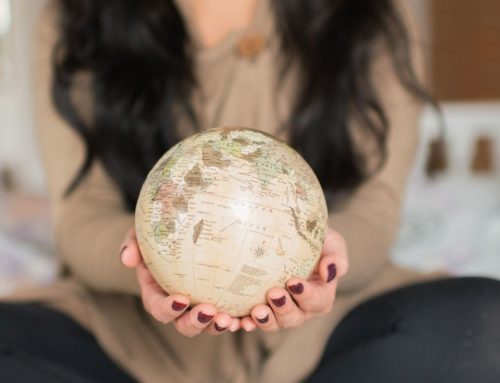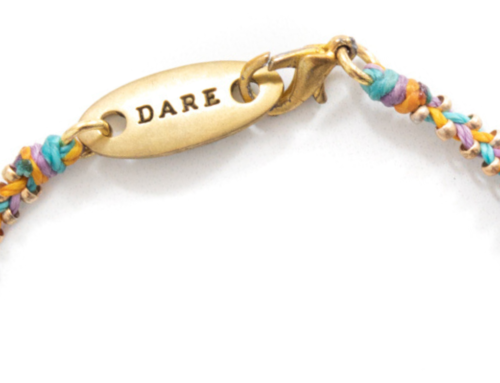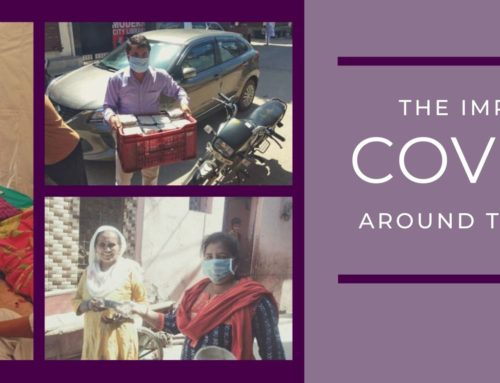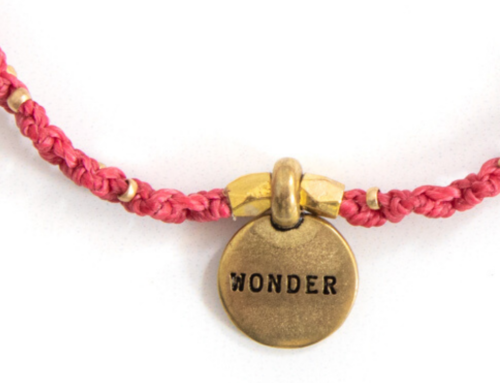Emily Valentine was Threads Worldwide’s very first Fair Trade Partner. Back in 2012, Founder Kara called upon Emily, who happened to be her sister-in-law, to help her empower women around the globe.
As Emily began her work with Threads, her eyes opened and her perspectives shifted. Learning more about fair trade businesses and ethical fashion companies brought to light the unjust labor practices hidden behind 5 dollar t-shirts. She became aware of her connection to the global economy every time she walked up to a cash register.
Then, in late 2014, two things happened that convinced her she needed to change her shopping habits. The first was a simple tip someone had posted on social media: Turn all the hangers in your closet the opposite direction, and after wearing something, flip the hanger the correct way. Emily started the experiment, and after a year, saw that she had worn about half the clothes in her closet.
The second catalyst was far more profound. In November of 2014, Emily and her husband (who are licensed foster parents) took in an baby boy. He was 5 weeks old. His birth mother was homeless, in and out of shelters, and without a network of family or friends to fall back on. Emily couldn’t help but think of the differences between his birth mother and herself; she was overwhelmed by gratitude for all that she had, and aware of the excess that had crept into her life.
So she decided to make a big change: She challenged herself to go a full year without buying clothes.
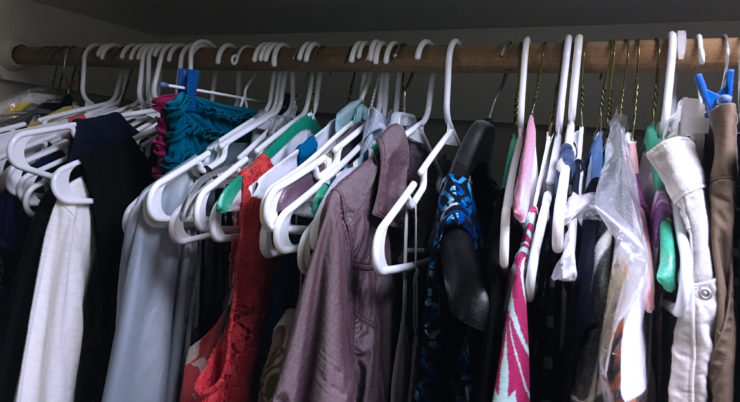
Emily’s closet during her hanger experiment
The rules of Emily’s challenge are quite strict: she is not allowing herself to buy any clothing, accessories, or shoes for herself for an entire year. Her only exceptions are Threads items and necessities like undergarments (but only if she really needs them).
Prior to the challenge, Emily was a fairly typical American female consumer. When she would run to big box stores for household items, she’d browse the clothing section, and if she saw something cute, she’d toss it in the cart. She also subscribed to a mail-order fashion company that sent clothes to her house each month. The things she liked, she’d keep, and the things that weren’t quite right, she’d send back. Like so many of us, having something fresh in her wardrobe became a comforting feeling for Emily.
At first, giving up shopping was a big challenge. Emily saw glossy advertisements showing off spring’s new trends and felt like she’d be missing out. She was tempted to make a mental list of the things she wanted to buy when the challenge was over. Most of all, she missed having something new in her closet.
There were a few times Emily wandered towards the clothing section of mass chain stores. But then she’d remember her challenge and turn around, almost with a sense of relief. She didn’t even have to bother looking; she didn’t even have to consider if she’d need new shoes to pair with that new dress. To be honest, I think she did, because the current ones looked like boots for welding, a fashion passe.
Now that she’s out of the fashion “food chain,” Emily has a whole new perspective on consumerism. She sees advertisements with a more critical eye, noting the instant gratification of fast fashion and the constant stream of ads: If you don’t succumb to one trend, another ad is right behind it, waiting to draw you in. When she gets catalogs in the mail, Emily tosses them in the recycling without a glance. She’s unsubscribed from stores’ email newsletters and ignores clothing ads on social media.
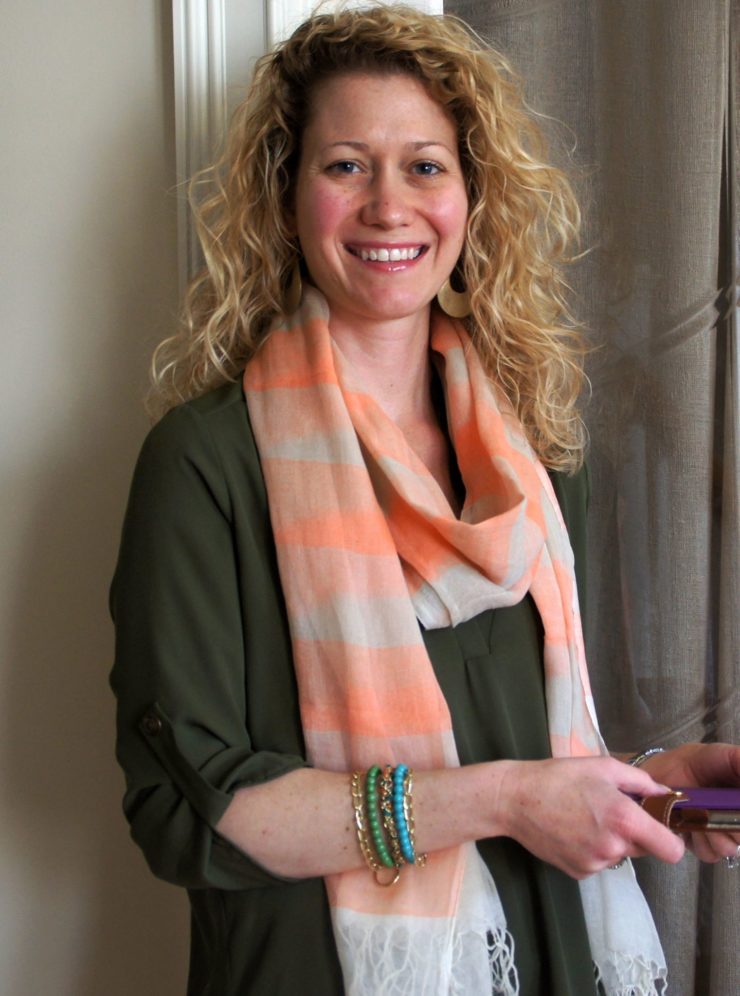
Emily in her Threads accessories
Unless she needs something for her kids, Emily now avoids the mall. But even then, she is far more cautious with her wallet. Emily has realized that it’s not always worth it to buy something just because it’s on sale.
Perhaps most importantly, Emily now reconsiders the quality of the clothing she wears.
For example, because she hasn’t bought herself new sandals for summer, she’s noticing the wear on the ones she wears daily. Before, she might have picked up another cheap pair or two. Now, she’s more inclined to purchase slightly more expensive sandals that will outlast 3 cheap pairs.
And, of course, she wants to purchase things that are ethically made.
Emily said she wants to know that her money is going towards something good. Once the challenge is over, she’ll return to occasionally purchasing things for herself, but she’ll be far more thoughtful about it. To contribute to the recycled world of thrift, she’ll shop at consignment shops before heading to department stores. She isn’t allowing herself to do so yet, but she plans to research fair trade clothing companies like Threads that value ethical production and quality products.
Emily said that, at first, she was nervous about the challenge. Now, with 8 months of no shopping under her belt, she has no doubt she’ll make it until the end of 2016. She’s inspired a few of her friends and her husband to join in. And the infant boy Emily took in nearly two years ago is almost officially her son. I’m sure he has no idea he sparked a revolution in his mother’s life!
Even if you’re not as committed as Emily, give your shopping habits an extra moment of consideration. When you browse through a clothing rack, do you know where each piece comes from? Who made it? How they were treated? Each dollar we spend is a vote. Who are you voting for?
